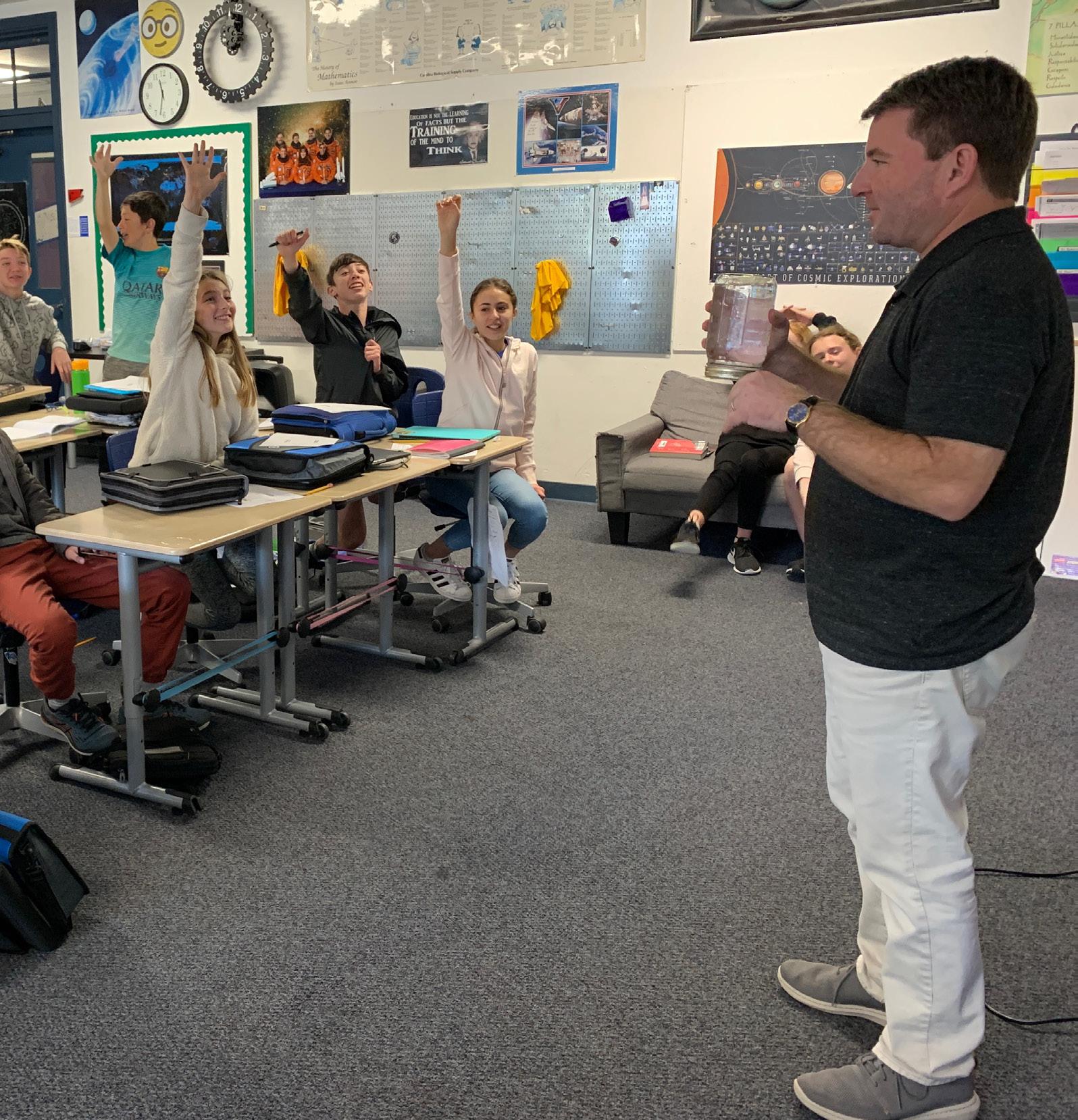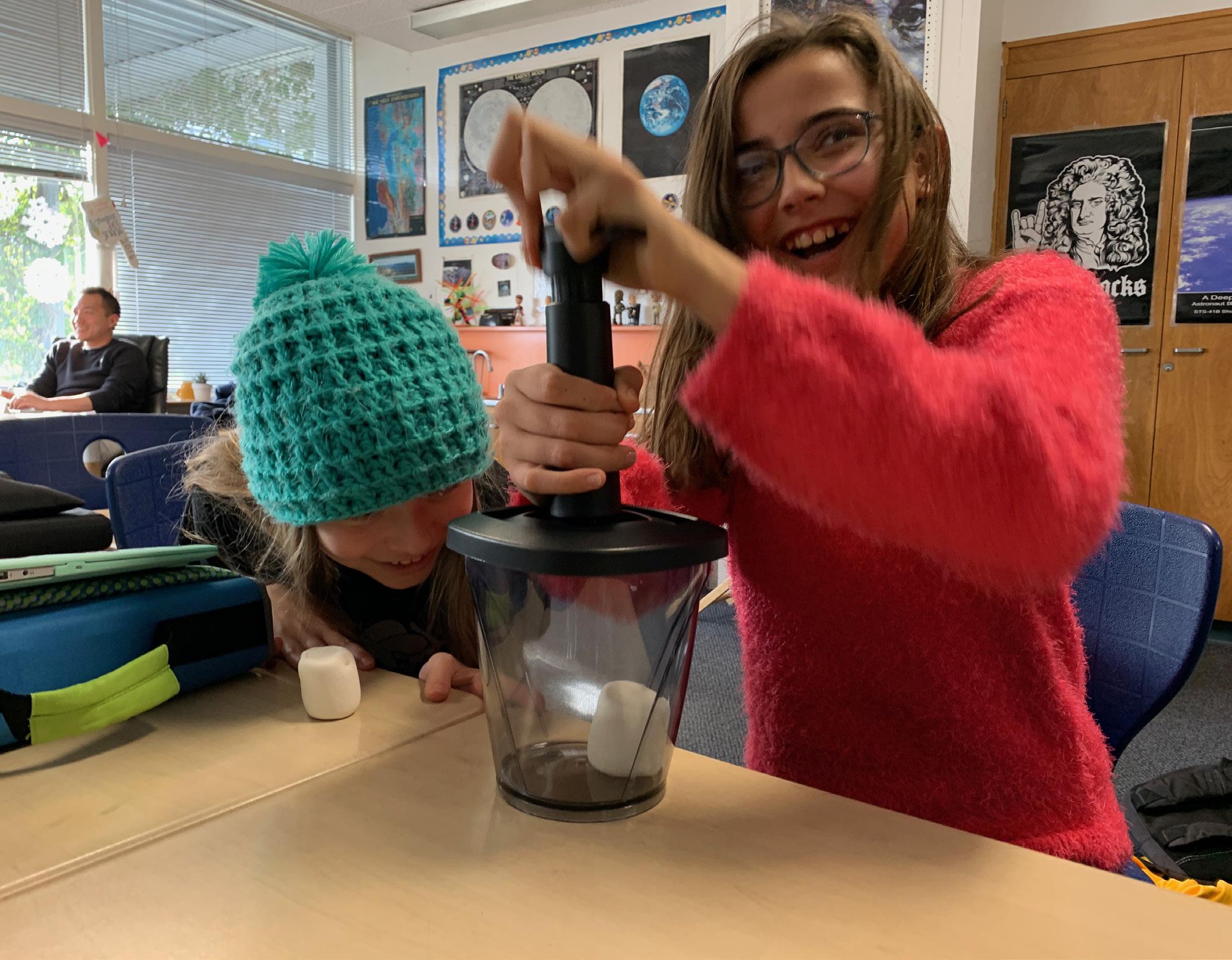
5 minute read
The Sky’s the Limit
from The Marker 2020
THE SKY’S THE LIMIT FLIGHT & ROCKETRY IN 6TH GRADE SCIENCE

In his 22-year tenure at Mark Day School, 6th grade math and science teacher Tim Evans has taught the flight and rocketry unit for as long as he can remember. And, like all his science units, this one intends to spark students’ excitement and innate eagerness for understanding “the way stuff works.” Tim says, “I want them to enjoy science and be able to see that science is actually all around them.” What better way to show this than with Newton’s Laws of Motion? The six-to-eight week unit on flight and rocketry is a great way to introduce physics concepts—concepts that often aren’t taught until high school. “Generally in the United States, we tend to undercut kids in what we think they can do in science,” says Tim.
“Physics is typically taught in junior or senior year of high school because it’s complex material. Middle school students are missing out on a lot of cool concepts because traditionally, they’ve been reserved for older students. But through my experience at Mark Day, they’re not only ready to learn— they’re eager to learn.” The unit begins with lessons about the properties of matter. “Understanding that air is matter is really a jumping off point for these concepts because it makes a lot of other things make sense,” says Tim. Scientific theories like the Bernoulli principle and Newton’s Laws of Motion are the foundation for understanding the way more familiar objects function scientifically—like flying a kite, controlling an airplane, shooting a rocket into the air, and riding a hot air balloon. Though he’s been teaching this material for years, Tim says that these

classes are different every year. “The students really keep me on my toes,” he explains. “Every year, they ask questions I’ve never been asked before, and I end up learning quite a bit along the way as well.” Once students understand basic physics concepts, they have the opportunity to understand them on a deeper level through hands-on activities. One such activity that demonstrates air pressure involves marshmallows,

ACTIVE PARTICIPATION Students in Tim’s class learn to love science through engaging, hands-on activities that demonstrate scientific concepts in real life. In this photo, students are eager to volunteer during an activity demonstrating water pressure. During the activity, Tim fills a jar with water and seals it with a screen. When he holds it upside down, the water miraculously stays in the jar. It’s a demonstration of the interaction between surface tension and air pressure.
Physics is typically taught in junior or senior year of high school....But through my experience at Mark Day School, [middle school students] are not only ready to learn—they’re eager to learn.”
It’s my role to spark an interest.”

much to students’ excitement. “Part of the Bernoulli Principle relies on the understanding that there is air pressure,” says Tim. During class discussion, Tim will often explain that the air in the gym weighs as much as an elephant—a difficult concept to grasp because it’s evenly spread out and completely invisible. So to demonstrate air pressure at work, Tim gives students a food storage container that serves as a vacuum and a single marshmallow. Students put the marshmallow in the container and begin to pump the air out of the container. As they do so, the air trapped in the marshmallow pushes against the sides of the marshmallow in an attempt to escape. The result: an extra large marshmallow!
Tim says, “Making air pressure a visual concept lends to a deeper understanding of the concept.” Density is another important scientific concept taught in this unit. To learn about density, Tim incorporates math by giving small groups of students a clear tube holding a mystery substance (like teflon) cut into different sized pieces. The task is to find the density of each piece by weighing, measuring the volume, and applying the formula, which is mass divided by volume. The “aha” moment comes when they realize all pieces—regardless of size—have the same density. “It’s a hands-on activity where they come to their own conclusions, rather than just telling them during a lecture that the density of a substance doesn’t change if you cut it into pieces,” says Tim. Another activity students enjoy involves the interaction of gas and pressure. Students place “fizzy tabs” (alka seltzer) and water in a small plastic canister, step back, and watch it shoot into the air moments later. It’s a demonstration of Newton’s Third Law of Motion, action and reaction. By the time Tim shoots a larger rocket into the air (see photo to the right) near the end of the unit, students fully understand how and why it works the way it does. “I don’t know what we’re doing today, but I know it’s going to be fun.” It’s a shared thought for many students who have entered Tim’s class over the past 22 years. Tim believes his role as a 6th grade science teacher is to spark a natural interest in science, one that he hopes they will carry with them to 7th grade and far beyond. “I want them to be curious,” he says. “I want them to possess a sense of wonder about the world around them. Students have the rest of their lives to study science content. It’s my role to spark an interest in doing so.” And, Tim says, it’s a bonus when students initiate a dinner-table conversation about scientific concepts their parents don’t know. What’s kept Tim at Mark Day School for 22 years? In his words, “I feel lucky to work with amazing colleagues in a supportive community. Mark Day has always felt like a second home to me.”










